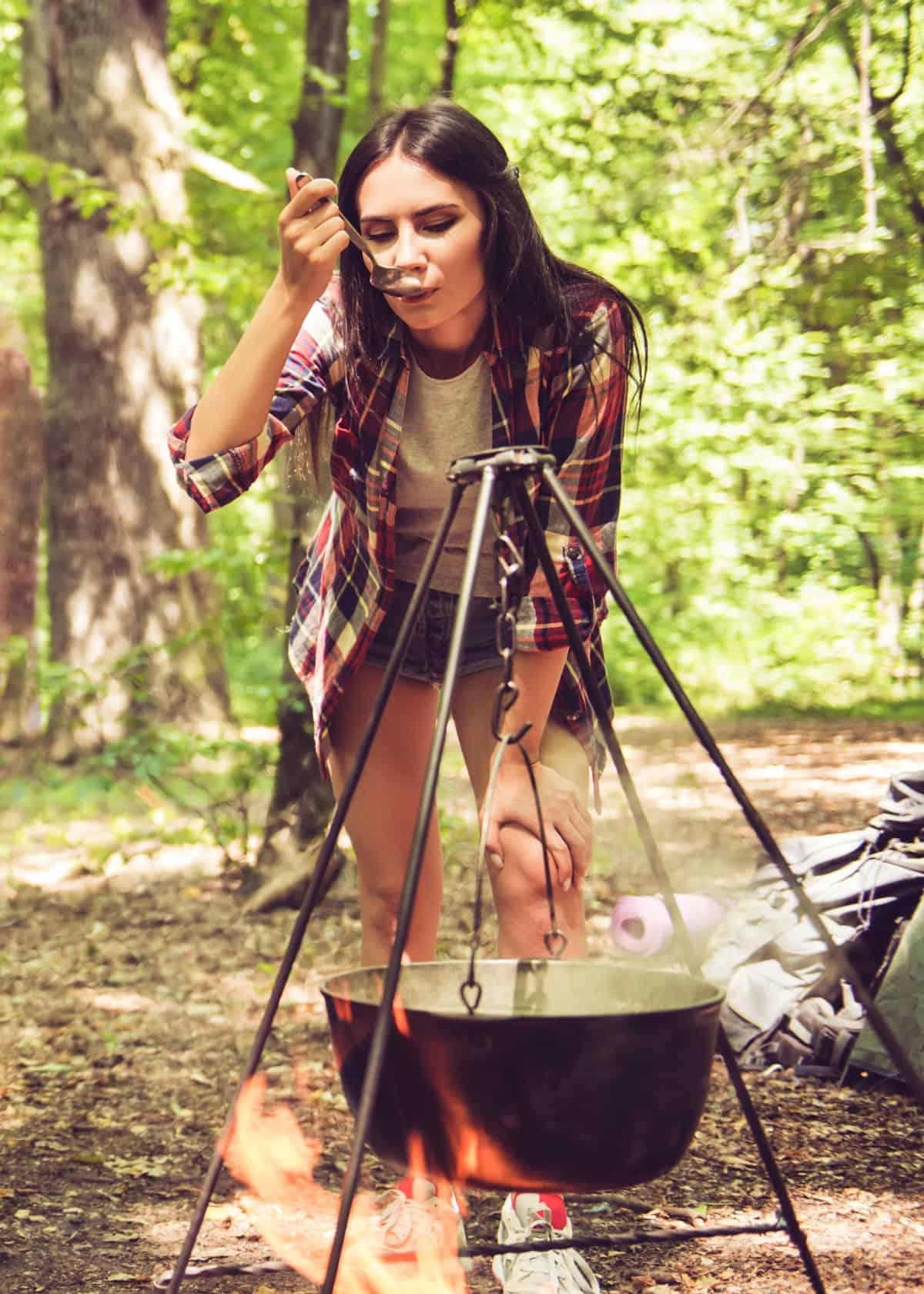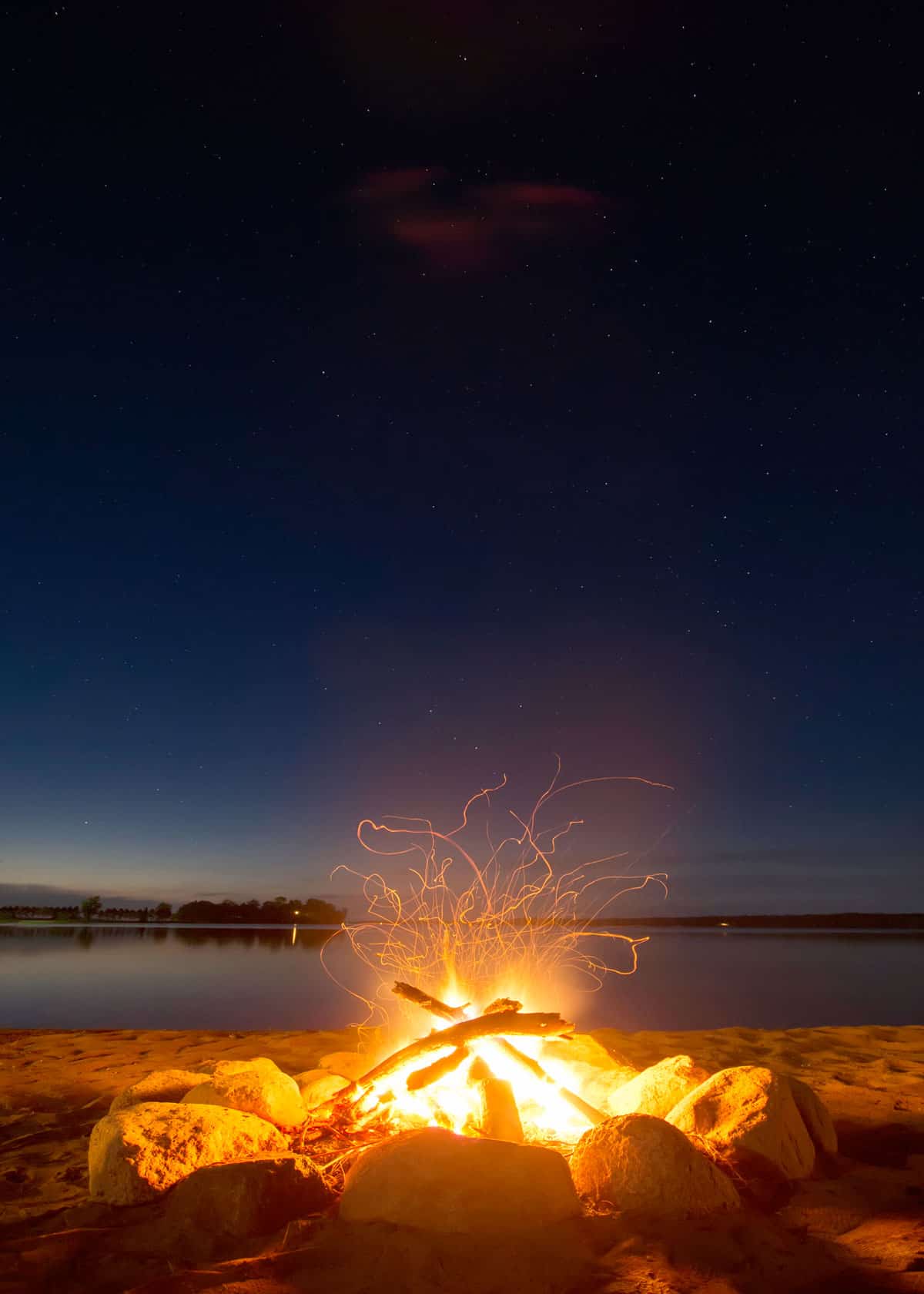Campfire Safety Tips
It is really important that when planning and creating a campfire, you always consider safety first. While campfires are a fun and a central part of the camping experience, you must plan them carefully because they can also be dangerous if they get out of control, both to you and your camping buddies but also to surrounding human populations and nature.
Before you light your campfire always consider the following:
- Check that fires are allowed: If they are prohibited, it goes without saying that you should not light a fire.
- The weather in your area: Check the weather conditions in your area and do not light a fire when it is incredibly dry and incredibly windy.
- Choose the right location: Ensure that the location is free from flammable vegetation. Use a built fireplace where possible or dig a trench to house the fire and avoid embers jumping out. Ensure the location is at least three meters away from surrounding tents and other items.
- Prepare your area: Create a boundary around your campfire using rocks. Clear debris and twigs from around the fire boundary to avoid any fire accidentally spreading.
- Do not use flammable liquid: Gasoline or diesel should never be used when starting a fire.
- Consider the size of your fire: Keep your fire just big enough for cooking and keeping warm; it should not be unnecessarily large.
- Never leave your fire unattended: An adult should be with the fire at all times.
- Supervise children and pets at all times: Children and pets cannot be trusted with fire even if they have been around it hundreds of times before. Please never leave them alone with fire or allow them free access to it.
- Do not place glass on the fire: This can heat up, pop and hit surrounding people.
- Use only fallen and dead wood: If you use the wood of living trees this could damage the environment and is likely to release a lot of smoke.
- Always have water nearby: Have a bucket of water nearby the fire at all times in the event of an emergency.
- Ensure your campfire is extinguished safely: Ensure that the campfire is totally doused with water and there are no remaining burning embers. Do this before bed and if you are leaving the vicinity. Do not use soil to douse the flames as embers can continue burning underneath.

Campfire Tools and Gear
Wood: Without wood, there is no campfire. There are three types of wood you will need:
- Tinder: This is made up of small twigs and dry leaves, as well as grass and needles.
- Kindling: This is made up of larger sticks and twigs.
- Fuel: This is made up of larger pieces of wood, ideally as dry as possible
Matches/Lighting equipment

Many people are opting for multi-purpose kitchen lighters, like these ones. They are cheap and reliable.

Log Tweezers

Grill/Cooking Grate

It’s a fantastically versatile piece of equipment and for not much, you can pick up a fairly good quality grate. Here is a reasonably priced camp grill on Amazon.
If you want to get really fancy you could include a portable, adjustable rotisserie in your mix! An example is the Texsport Rotisserie Grill and Spit.
Dutch Oven and Cast Iron Skillets

A dutch oven can be used to create some impressive camp meals. Here are 21 dutch oven camping recipes (via countryliving.com)
Campfire Tripod

This tripod goes perfectly with a dutch oven. It also eliminates the problem of creating a level surface to cook on.
Don't forget about a lid lifter (that lid can get crazy hot) and lid stand. They are small and inexpensive but you'll miss them if you forget them.
Oven Mitts

You can opt to just bring your oven mitts from home or you can go all out and get some industrial level mitts. I've ruined more than one pair of decent oven mitts from home while camping (spark holes).
Metal Skewers

I prefer using these to wooden disposable ones for two reasons, the first being that wooden ones don’t last very well in a very hot campfire. The second reason is that you can use metal ones over and over again so they are less wasteful.
Tongs

Aluminum Foil
Aluminum foil is a very handy item to have as it allows you to wrap and cook all sorts of things up to avoid them becoming charcoal before they are cooked through. Examples include potatoes, fish, and vegetables.
S'mores Ingredients!
Repeat along with me. Graham Crackers. Chocolate. Marshmallows. Graham Crackers. Chocolate. Marshmallows. Here's a great set of recipes for campfire s'mores.

4 Campfire Cooking Tips
Some important and useful cooking tips for your campfire:
- If you are cooking meat, please make sure that it has been stored correctly beforehand and has been kept cold enough, and when cooking make sure you cook the meat thoroughly to kill any bacteria and pathogens. Here's how to keep your food cold while camping.
- Avoid cooking any items with lots of fat and avoid frying items on the campfire as oil and grease can lead to a fire getting out of control particularly in very dry conditions.
- Wait to cook until the logs look like ashy chunks on top of glowing embers. If you cook while the fire is still in the early stages you will just chargrill everything you are cooking and leave it all raw in the middle.
- Be careful not to overcook the food. Carryover cooking can occur when you are flame cooking, meaning that the food will continue to cook even when it is taken off the fire. So make sure you balance it to ensure that you don’t undercook, but make sure that you don’t leave it until it is incinerated.
Here are some more tips on thekitchn.com for cooking over an open campfire.





